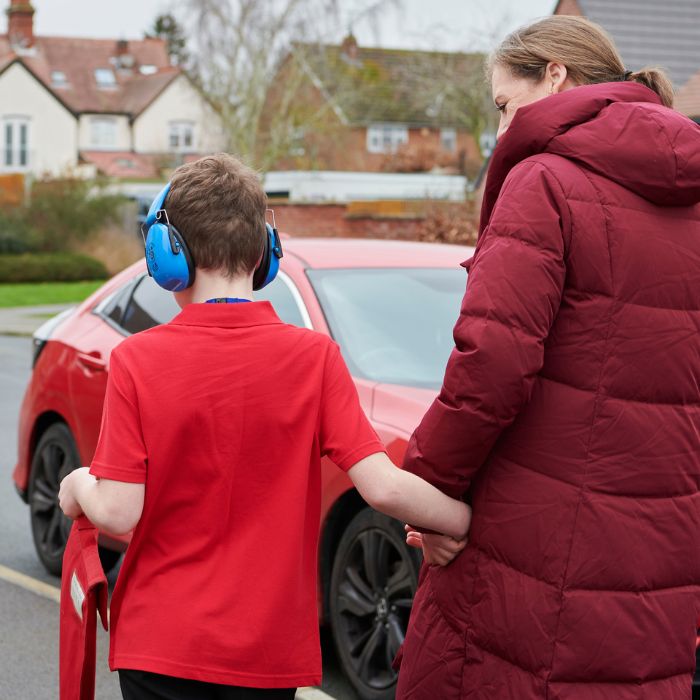Get exclusive deals you won't find anywhere else straight to your inbox.
19 August 2024, By Sensory Direct

Mastering The Home To School Routine
Preparation and Planning
Time is very limited in the morning, so any preparation that can be done the night before will be of great advantage. Gather all of your school run resources in one easy to reach place. Show your child where they are and go through the different products so they can see what they have to use and where it is all kept. Lay out school uniforms or sensory clothing and pack school bags with everything needed for the next day. Ask your child to pick their favourite sensory fidget toys or weighted animals, if appropriate. These simple steps can help your child to manage their expectations and see what support is available to them. Try to keep the resources in the same place for consistency.

Establish A Morning Routine
Try to establish a consistent morning routine with the same wake up time. Using social stories or visual timetables, break down tasks into small steps, such as eating breakfast and getting dressed. Repeating the same routine each day helps the transition from one step to another go smoothly. If it helps, use a visual timer to count down between each step. Having a calm, set morning routine provides stability and comfort, which goes a long way to ensuring a happy transition from home to school.

Create A Visual Schedule
Having a well thought out visual schedule helps provide a sense of predictability and comfort. Use pictures, symbols or written words to outline the home to school routine. We love our home to school routine communication fan. It contains 14 colourful and clear symbols to help you explain the routine.

Start with home, breakfast, and then choose your method of transport such as car or walking, and follow the relevant symbols. It's really simple to use and can be wipe-cleaned for daily use. Look at the fan together with your child and explain how they will get to school. They can then follow the steps in the morning to help reduce anxiety and unpredictability. Be sure to practise the route to school multiple times before the first day back. Identify safe and familiar landmarks to help break down the journey into smaller, more manageable steps.

Manage Sensory Overload
The journey to school will have lots of sensory triggers. Congestion, dogs barking, crowded spaces, can all contribute to increased anxiety, stress and discomfort. Be sure to identify and address any potential triggers in advance and pack sensory tools to help reduce sensory overload. Try noise-cancelling ear defenders or ear plugs, designed to reduce uncomfortable sounds. Or sensory chews to help manage increased stimming such as chewing. Help keep fidgeting hands occupied with fidget toys and stress balls. Opt for smaller, easy to transport resources that can be easily carried in a backpack.

We hope that these easy steps help you create a calmer, more manageable home to school routine for your family. If you have any other tips or ideas that have worked for you, we'd love to hear them so please get in touch on facebook or instagram.
Stay in the know

